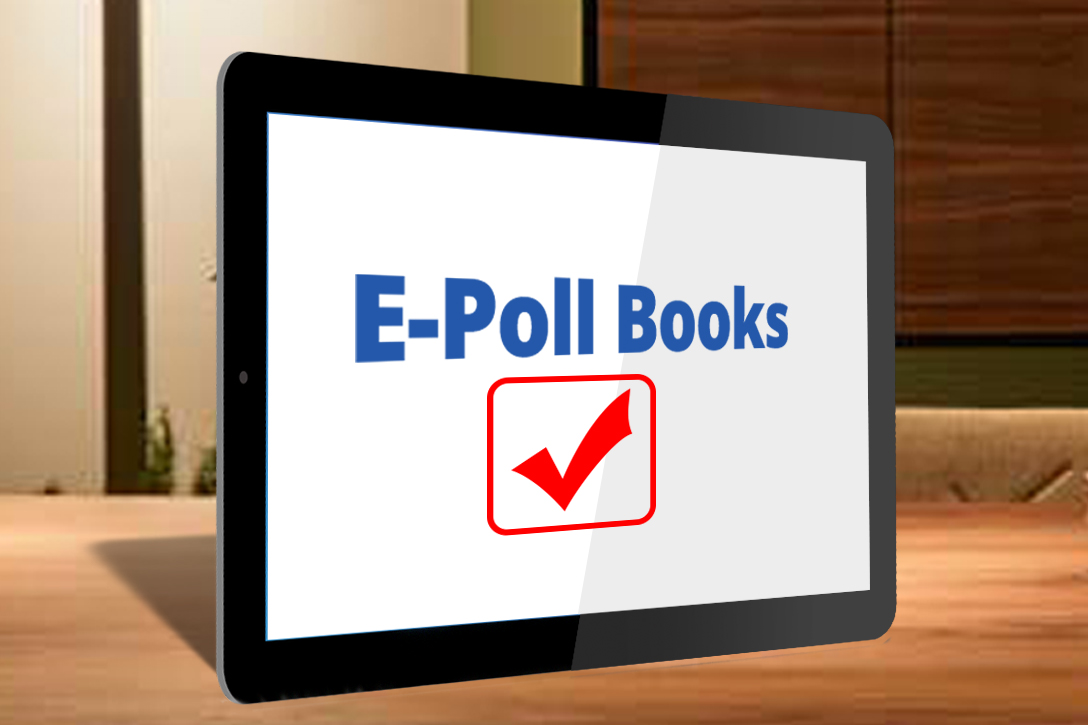Introduction
As states explore new technologies to facilitate the voting process, the use of electronic poll books (e-poll books) is becoming increasingly prevalent. Traditionally, voting jurisdictions have had paper poll books that contain a list of eligible voters in the district or precinct. E-poll books, which typically come in the form of a laptop or tablet, have the ability to do much more than look up eligible voters. See the section below on What Can E-Poll Books Do?
E-Poll Books in the States
According to the 2018 Election Administration and Voting Survey, 36 states used e-poll books in at least one jurisdiction in the 2018 elections. In total, 26.2% of jurisdictions nationwide reported using e-poll books, representing a 48% increase in e-poll book usage since the 2016 election.
State legislatures have responded to the increase in jurisdictions using e-poll books in a number of ways. Some states have instituted a certification process for e-poll books similar to the process for certifying voting equipment (see NCSL webpage on Voting System Standards, Testing and Certification). Others have instituted statewide policies through administrative rule or by directive from the secretary of state’s office. Some states have authorized e-poll books and provided some procedural guidance for jurisdictions, and some have not addressed e-poll books in statute.
As of October 2019, e-poll books have been authorized or are being used without statutory authorization in at least 41 states plus D.C. In summary:
- Alabama, California, Connecticut, Idaho, Indiana, Massachusetts, New Hampshire, New Jersey, New York, Ohio, Pennsylvania, Texas, and Virginia.
- Colorado, Delaware, Georgia, Kansas, Maryland, Michigan, Nevada, New Mexico, Rhode Island, South Carolina, Utah and Wisconsin.
- Arizona, Arkansas, Florida, Illinois, Iowa, Minnesota, Mississippi, Missouri, Nebraska, North Carolina, North Dakota, South Dakota, Tennessee, West Virginia and Wyoming.
- District of Columbia and Kentucky.
- Alaska, Hawaii, Louisiana, Montana, Oklahoma, Oregon, Vermont and Washington.
13 states certify e-poll Books:
12 states provide statewide procedures for e-poll books but do not have a formal certification program:
15 states have statutes that authorize the use of e-poll books but do not fall into the categories above:
One state plus D.C. do not have statutory authorization for e-poll books, but they are being used by local jurisdictions:
Eight states do not prohibit the use of e-poll books, but they are not currently being used:
Maine does not permit e-poll books
What Can E-Poll Books Do?
There are a variety of e-poll books on the market, and many jurisdictions design their own. An e-poll book typically provides one or more of the following functions:
- Allows voters to sign in electronically.
- Allows poll workers to easily redirect voters in the wrong location to the correct polling place.
- Scans a driver’s license to pull up a voter’s information, avoiding data entry errors.
- Allows poll workers to look up voters from the entire county or state. This can reduce time spent checking in voters, one of the bottlenecks in the voting process.
- Allows real-time updates of voter history.
- Notifies poll workers if a voter already voted absentee or during the early voting period.
- Produces turnout numbers and lists of who voted.
- In states that have same-day registration, e-poll books may be used to register voters.
- Uses a photo to verify a voter’s identity. This could be a method to prevent voter fraud, but it is not yet in place anywhere.
- E-poll books in some states (Maryland and Indiana, for example) are networked and receive immediate updates on who has voted in other voting centers. Other states (Minnesota and Michigan, for example) specify that e-poll books may not be connected to the network.
Things to Consider
Jurisdictions that consider using e-poll books should also evaluate the following issues:
- Costs for purchase and maintenance.
- Safeguards against a cyber-attack altering information on the e-poll book or disrupting the transmission of information.
- Physical security of e-poll book equipment and the data it contains.
- Potential for a mass malfunction of e-poll books, whether by chance or deliberate attack, leading some jurisdictions to keep a paper poll book on hand.
- Challenge of training poll workers on a new technology.






